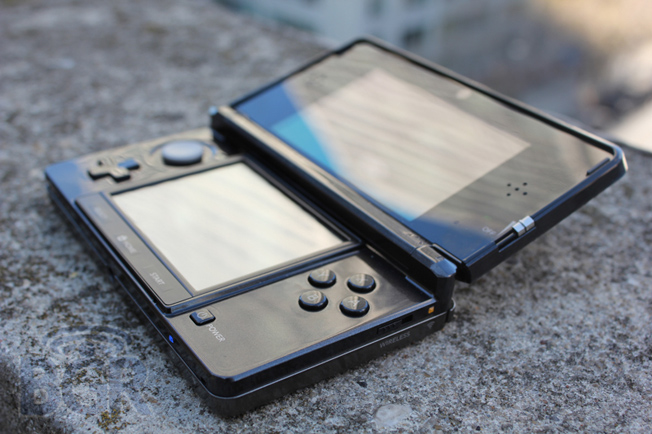For years, Nintendo has believed it could reject smartphone and tablet apps, yet still flourish. The reason for this delusion is familiar — it’s the toxic Last Blockbuster Syndrome that doomed the consumer electronics divisions of Motorola in 2004 and Nokia in 2007. Often at the start of a massive trend shift in consumer electronics, dominant dinosaurs get one massive hit built on a nearly obsolete paradigm, and that allows them to be lulled into a comfy trip to the grave.
Nobody was surprised by the stiff quarterly loss and weak Wii U numbers Nintendo just reported. But there was one number in the report that was a bit of a shocker – 3DS sales sank below 900,000 in the spring quarter.
The DS franchise has been the cornerstone of the Nintendo empire as the fortunes of its home console unit have waxed and waned. And here we are in a quarter when global smartphone sales topped 200 million units, and the DS moved just 820,000 units.
Of course, Nintendo’s portable console business cannot survive the incredible pace of hardware changes and hundreds of thousands of games launched annually in the smartphone industry. But the company is probably only realizing it now.
The massive success of the 3DS blinded Nintendo during the fiscal years of 2010 and 2011, just when the company should have made a radical strategic change and fully embraced the mobile app market. During that golden year, annual sales of 3DS exploded from 3.6 million to 13.5 million.
Three years after the debut of iPhone, Nintendo apparently was able to fend off the smartphone challenge and establish the 3DS as a true consumer electronics champion.
But the huge success of the device turned out to be a mirage — the growth quickly flattened out in the following year and now sales volumes are collapsing. Nintendo had misinterpreted the last gasp of a dying portable console industry to signify lasting dominance.
Motorola did precisely the same thing in 2005, when the RAZR mania swept the world. Back then, Motorola refused to follow Nokia’s example in developing a smartphone OS and pushing aggressively into the market for multitasking mobile phones. The old Motorola template was to crank out simple feature phones, but make them really, really slim. The RAZR was the last Motorola blockbuster — a gloriously dumb white elephant 18 months from obsolescence at birth, but 30% slimmer than leading rival phones.
The RAZR ended up selling 50 million units in a year and a half. By Christmas 2006, Nokia’s smartphones started crushing RAZR sales across the world, leading to a spectacular period of profitability for the Finnish giant in 2006 and 2007.
The culmination of Nokia’s apparent triumph was the N95, a smartphone with a 5-megapixel camera, GPS and other high-end features no other vendor could package into a single model. The N95 was a highly advanced handset with a small display and keypad controls — the height of Nokia’s engineering prowess and its greatest folly.
Three months after the N95 started selling out to adoring European and Asian consumers, Apple launched a device called iPhone in the United States. It lacked even 3G support and had antenna technology cobbled together by engineers who had never built a modern phone.
But it did OK.
Lulled by the phenomenal sales of the N95 in 2007, Nokia simply refused to believe that touchscreen models were the future of the phone business. Much like Nintendo is refusing to believe that portable gaming has moved to smartphone and tablet platforms for good.
The worst enemy of major consumer electronics companies is not suddenly weakening sales, which sometimes shake firms out of their stupor. It’s that last, big, almost obsolete blockbuster that gives executives a reason to avoid change.
That last big hit delays change by several years, channels resources into dead-end projects and kills the careers of executives advocating radical departures from the norm. It was the RAZR that ultimately felled Motorola, the N95 that was Nokia’s bane — and we will likely find out that it was the huge success of the 3DS in 2010 and 2011 that paralyzed Nintendo when it most needed to switch gears.




